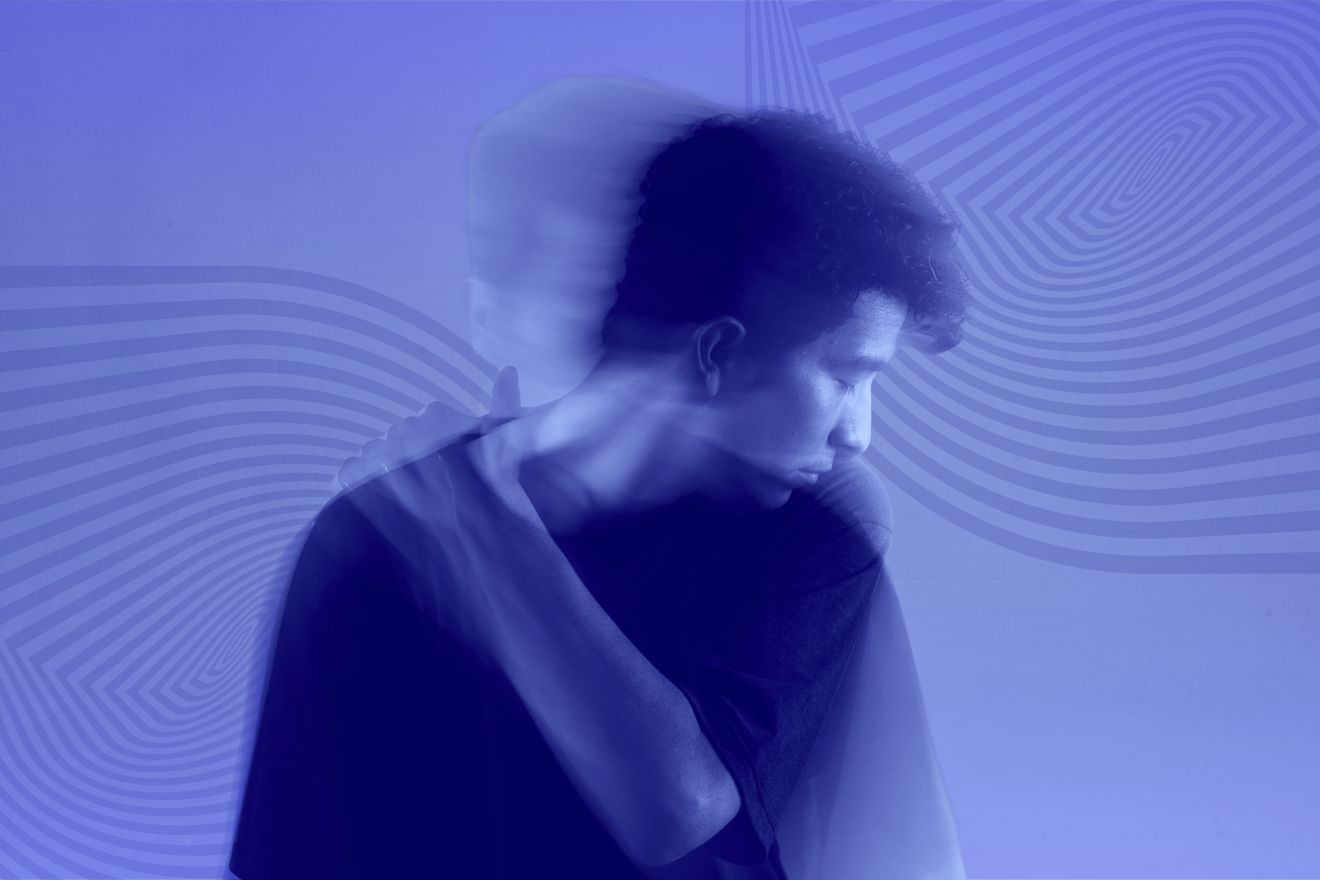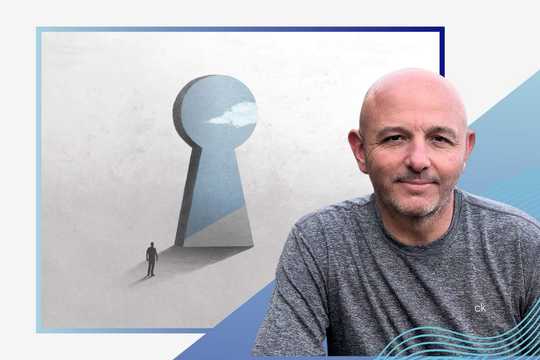“Be careful.” “Watch your step.” “Remember to bring an umbrella.” Parents were probably the first people who taught us how to worry. It’s normal to think about the future. We plan and anticipate the worst and hope for the best outcome. But what happens if those anxious feelings consume us and we cannot free their grip on us?
“Anxiety attacks are often in response to stress or anticipation of a stressful event. They can last much longer than panic attacks, sometimes for days, weeks, or even longer if you do not address the source of stress.”
— Katharine Chan, MSc, BSc, PMP
What is an Anxiety Attack?
An anxiety attack is a gradual build-up of anxiety and worry, often related to a specific stressor or situation. It is an episode of heightened anxiety, fear, or discomfort that triggers physical and mental responses when there is no real danger or apparent cause.
The feelings of an anxiety attack start slowly and increase over time. They can be for a few minutes but may last for hours or even months. Frequency varies; some individuals may experience attacks occasionally, while others may have them more frequently, negatively affecting their daily lives.
Is an ‘Anxiety Attack’ a Medical Term?
The term “anxiety attack” is commonly used in everyday language to describe an episode of intense fear or anxiety. The Diagnostic and Statistical Manual of Mental Disorders (DSM-5) does not include ‘anxiety attack’ as a clinical term.
How Can You Tell if You’re Having a Panic Attack or an Anxiety Attack?
People often use the terms panic attacks and anxiety attacks interchangeably; however, they describe different experiences and have distinct characteristics.
Here are the key differences between the two:
Anxiety Attack
An anxiety attack is a more gradual build-up of anxiety and worry compared to a panic attack. It is often related to a specific stressor or situation. The term “anxiety attack” is not a clinical term used in the DSM-5 but is commonly used to describe intense periods of anxiety.
Anxiety attacks are often in response to stress or anticipation of a stressful event. They can last much longer than panic attacks, sometimes for days, weeks, or even longer if you do not address the source of stress. The things that trigger anxiety attacks are usually related to a specific situation or thought, such as work stress, financial concerns, relationship issues, or health worries.
The experience of an anxiety attack varies between individuals. Some common symptoms of an anxiety attack include the following.
- Excessive worry or fear
- Restlessness or feeling on edge
- Fatigue
- Difficulty concentrating or mind going blank
- Irritability
- Muscle tension
- Sleep disturbances (difficulty falling or staying asleep, or restless, unsatisfying sleep)
- Physical symptoms like increased heart rate, sweating, dizziness, or gastrointestinal issues
These physiological and psychological changes are a natural part of the body’s defense mechanism but are often disproportionate to the actual threat during an anxiety attack. Understanding these changes can help in recognizing and managing anxiety attacks more effectively.
Panic Attack
A panic attack is a sudden onset of intense fear or discomfort that reaches a peak within minutes and includes a variety of physical and mental symptoms, including the following:
- Palpitations, pounding heart, or accelerated heart rate
- Sweating
- Trembling or shaking
- Sensations of shortness of breath or smothering
- Feelings of choking
- Chest pain or discomfort
- Nausea or abdominal distress
- Feeling dizzy, unsteady, lightheaded, or faint
- Chills or heat sensations
- Numbness or tingling sensations (paresthesias)
- Derealization (feelings of unreality) or depersonalization (being detached from oneself)
- Fear of losing control or “going crazy.”
- Fear of dying
Panic attacks come on suddenly and often without warning. They can occur out of the blue, even during periods of calm. Typically, panic attacks peak within minutes and usually subside within 20 to 30 minutes, although some symptoms may persist longer. Specific stressors can trigger panic attacks, but they can also occur unexpectedly without an apparent cause.
Key Differences Between a Panic Attack and an Anxiety Attack
Here is a summary of the differences between the two conditions:
- Intensity and Suddenness: Panic attacks are intense and sudden, whereas anxiety attacks build up gradually and can vary in intensity.
- Duration: Panic attacks are short-lived and peak within minutes, while anxiety attacks can last for a prolonged period.
- Symptoms: Panic attacks involve severe physical symptoms and an intense fear of catastrophe or losing control. Anxiety attacks involve more prolonged worry and apprehension, with physical symptoms being less intense than those of panic attacks.
- Triggers: Panic attacks can occur unexpectedly, while specific stressors or situations typically link anxiety attacks.
- Clinical Recognition: Panic attacks are recognized in the DSM-5 and can be a symptom of panic disorder, among other anxiety disorders. Although the DSM-5 does not formally define anxiety attacks, people commonly understand them in the context of generalized anxiety disorder (GAD) or other anxiety-related conditions.
Understanding these differences can help identify and manage the conditions more effectively and seek appropriate treatment from a healthcare professional.
Causes and Triggers of an Anxiety Attack
There isn’t a single cause or trigger that can lead to an anxiety attack. A combination of causes, including medical conditions and life situations, can contribute to an anxiety attack.
Stress
Stress is a significant trigger for anxiety attacks. Stressful situations or events can activate the body’s “fight-or-flight” response, releasing stress hormones like cortisol and adrenaline, which prepare the body to respond to perceived threats. Chronic or intense stress can overload the system, leading to anxiety attacks.
- Acute Stress: Immediate stressful situations, such as an argument or a sudden job loss, can trigger anxiety attacks.
- Chronic Stress: Long-term stressors, like ongoing work pressure, financial difficulties, or prolonged illness, can contribute to persistent anxiety and the occurrence of anxiety attacks.
Mental Health Disorders
Certain mental health disorders are directly associated with anxiety attacks. These conditions alter brain function and chemistry, making individuals more susceptible to anxiety.
- Panic Disorder: Characterized by recurrent panic attacks and a persistent fear of having more attacks.
- Generalized Anxiety Disorder (GAD): Involves chronic, excessive, and unrealistic worry about various aspects of life without a known reason, leading to frequent anxiety attacks.
- Post-Traumatic Stress Disorder (PTSD): Trauma-related stress can trigger anxiety attacks when individuals are reminded of or re-experience their traumatic events.
- Social Anxiety Disorder: Fear of social situations can provoke anxiety attacks when individuals are exposed to or anticipate social interactions.
- Phobias: Exposure to a specific situation (e.g., flying or heights) or object (e.g., spiders or clowns) can create intense fear or anxiety.
Medical Conditions
Several medical conditions can cause or exacerbate anxiety attacks. These conditions can affect bodily systems in ways that mimic or induce anxiety symptoms.
- Heart Conditions: Issues like arrhythmias or heart disease can cause symptoms similar to panic attacks, such as chest pain and palpitations, which can then trigger anxiety attacks.
- Thyroid Problems: Hyperthyroidism (overactive thyroid) can cause symptoms such as increased heart rate and nervousness, leading to anxiety attacks.
- Respiratory Disorders: Conditions like asthma or chronic obstructive pulmonary disease (COPD) can cause shortness of breath and hyperventilation, which can trigger anxiety attacks.
- Substance Use or Withdrawal: The use of stimulants (e.g., caffeine, cocaine) or withdrawal from certain substances (e.g., alcohol, benzodiazepines) can induce anxiety attacks.
Environmental Factors
Environmental influences and life experiences can significantly contribute to the onset of anxiety attacks.
- Trauma or Abuse: Experiencing or witnessing traumatic events can lead to anxiety disorders and frequent anxiety attacks.
- Life Changes: Major life transitions—such as moving, getting married or divorced, starting a new job, becoming a parent, or losing a loved one—can be highly stressful and trigger anxiety attacks.
- Living Conditions: High-stress environments—such as living in an unsafe neighborhood or enduring chronic financial instability—can increase the likelihood of anxiety attacks.
- Social Isolation: Lack of social support and feelings of loneliness can contribute to anxiety and the occurrence of anxiety attacks.
Learn More About Anxiety:
- Find out about The 8 Different Types of Anxiety
- Understand The Root Cause of Anxiety and Depression
- Discover the latest on Psychedelic Therapy for Anxiety
- Read about Can Microdosing Relieve Anxiety Symptoms?
- Get the latest on Psilocybin Therapy for Anxiety
Diagnosis
While “anxiety attack” may not be a formal medical term, the experiences it describes are real and can be diagnosed and treated effectively through proper medical channels.
To obtain a formal diagnosis, individuals experiencing panic or anxiety attacks should consult a healthcare professional, such as a primary care doctor, psychiatrist, or psychologist. The diagnostic process typically involves:
- Medical History and Physical Examination: To rule out other medical conditions that might cause similar symptoms (e.g., heart issues, thyroid problems).
- Psychiatric Evaluation: A detailed discussion about symptoms, their frequency, triggers, and impact on daily life.
- Assessment Tools: Standardized questionnaires and diagnostic criteria (such as those in the DSM-5) assess the severity and nature of the symptoms.
Treatment and Management Options
Treating anxiety attacks involves a combination of therapy, medications, lifestyle changes, and support strategies. Here are the primary treatment options:
Cognitive-Behavioral Therapy (CBT)
CBT is a structured, time-limited therapy that focuses on identifying and changing negative thought patterns and behaviors that contribute to anxiety. Techniques include cognitive restructuring (challenging and modifying negative thoughts), exposure therapy (gradual exposure to feared situations), and relaxation techniques (deep breathing, progressive muscle relaxation). CBT is highly effective for treating anxiety attacks and is often considered the first-line treatment.
Exposure Therapy
Exposure therapy is a form of CBT that involves gradual exposure to the feared object or situation until the anxiety decreases. This therapy can be conducted in vivo (real-life exposure) or through imagination (imaginal exposure). Exposure therapy is effective for specific phobias, social anxiety disorder, and panic disorder.
Psychedelic-Assisted Therapy
Studies are showing promising mental health benefits of psychedelics for anxiety disorders. Ongoing large-scale trials will compare psychedelic therapy to traditional psychotherapy. However, psychedelics are not beneficial for everyone and can worsen anxiety for some. Continued research will help identify who is most likely to experience long-lasting anxiety reduction from psychedelic therapy.
Medications
Antidepressants are the first-line treatment for anxiety disorders and can be effective for long-term management. Here are some types of antidepressants and their examples:
- Selective Serotonin Reuptake Inhibitors (SSRIs): Sertraline (Zoloft), Escitalopram (Lexapro).
- Serotonin Norepinephrine Reuptake Inhibitors (SNRIs): Venlafaxine (Effexor), Duloxetine (Cymbalta).
Benzodiazepines provide rapid relief of acute anxiety symptoms. These have a risk of dependence and tolerance; therefore, doctors typically prescribe them for short-term or situational use. Some examples include Alprazolam (Xanax) and Diazepam (Valium).
Lifestyle Changes
Making small modifications to your lifestyle can significantly improve your symptoms. Here are some ways to start
- Regular Exercise: Consistently being physically active has been shown to reduce stress, improve mood, and lower anxiety symptoms over time.
- Balanced Diet: Eating a nutrient-dense diet high in fruits and vegetables and low sugar intake can help stabilize blood sugar levels and reduce anxiety.
- Good Sleep Hygiene: Establishing a regular sleep routine and creating a restful sleep environment can decrease anxiety symptoms and increase energy and concentration.
Relaxation Techniques
There are various ways to help calm the mind, manage symptoms, and reduce overall anxiety. Some examples include deep breathing exercises, progressive muscle relaxation, and yoga.
A regular mindfulness and meditation practice involves focusing on being present in the moment and noticing your senses and feelings without judgment. It can help lower anxiety levels, make you feel better, and enjoy life again.
Acupuncture is a Traditional Chinese Medicine practice that involves inserting needles into specific points on the body. Evidence suggests that it relieves anxiety symptoms and promotes physical and emotional well-being.
Support Groups and Education
Sharing stories and coping strategies with a group of individuals with similar experiences can provide emotional support and reduce feelings of isolation.
Learning about anxiety, its causes, and ways to manage it empowers individuals to take control of their anxiety.
When to Seek Help:
- If you experience frequent or severe anxiety attacks that interfere with daily activities.
- If you have difficulty managing symptoms on your own.
- If symptoms of depression or suicidal thoughts accompany the anxiety attacks.
If you or someone you know is experiencing anxiety attacks, it’s essential to consult with a healthcare professional for appropriate diagnosis and treatment.
Follow your Curiosity
Sign up to receive our free psychedelic courses, 45 page eBook, and special offers delivered to your inbox.References
General
Anxiety Disorders. (2024, July 3). Cleveland Clinic. my.clevelandclinic.org/health/diseases/9536-anxiety-disorders.
Smith, M., MA, Robinson, L., Segal, J., PhD, & Reid, S. (2024, July 17). Anxiety Disorders and Anxiety Attacks: Symptoms & Treatment. HelpGuide.org. www.helpguide.org/articles/anxiety/anxiety-disorders-and-anxiety-attacks.htm.
Anxiety Disorders. (2018, May 4). Mayo Clinic. www.mayoclinic.org/diseases-conditions/anxiety/symptoms-causes/syc-20350961.
Differences Between Anxiety Attack and Panic Attack
Joy, K. (2017, January 11). Panic Attack vs. Anxiety Attack: 6 Things to Know. Michigan Medicine. www.michiganmedicine.org/health-lab/panic-attack-vs-anxiety-attack-6-things-know.
Vandergriendt, C. (2024, May 24). What’s the Difference Between a Panic Attack and an Anxiety Attack? Healthline. www.healthline.com/health/panic-attack-vs-anxiety-attack.
Treatment Options
Self Help – Cognitive-Behavioural Therapy (CBT). (2022, October 13). Anxiety Canada. www.anxietycanada.com/articles/self-help-cognitive-behavioural-therapy-cbt/.
Aucoin, M., LaChance, L., Naidoo, U., Remy, D., Shekdar, T., Sayar, N., Cardozo, V., Rawana, T., Chan, I., & Cooley, K. (2021, Dec 10). Diet and Anxiety: A Scoping Review. Nutrients, 13(12), 4418. https://doi.org/10.3390/nu13124418.
Aylett, E., Small, N., & Bower, P. (2018). Exercise in the Treatment of Clinical Anxiety in General Practice — a Systematic Review and Meta-analysis. BMC Health Services Research, 18(1). https://doi.org/10.1186/s12913-018-3313-5
Anxiety: Pharmacotherapy. (n.d.). CAMH. https://www.camh.ca/en/professionals/treating-conditions-and-disorders/anxiety-disorders/anxiety—treatment/anxiety—pharmacotherapy.
Chen, K. W., Berger, C. C., Manheimer, E., Forde, D., Magidson, J., Dachman, L., & Lejuez, C. W. (2012, Jun 14). Meditative Therapies for Reducing Anxiety: A Systematic Review and Meta-Analysis of Randomized Controlled Trials. Depression and Anxiety, 29(7), 545–562. https://doi.org/10.1002/da.21964.
Li, M., Liu, X., Ye, X., & Zhuang, L. (2022, Dec 9). Efficacy of Acupuncture for Generalized Anxiety Disorder: A Prisma-Compliant Systematic Review and Meta-Analysis. Medicine, 101(49), e30076. https://doi.org/10.1097/md.0000000000030076.
Suni, E., & Suni, E. (2024b, April 23). Anxiety and Sleep. Sleep Foundation. http://www.sleepfoundation.org/mental-health/anxiety-and-sleep.






